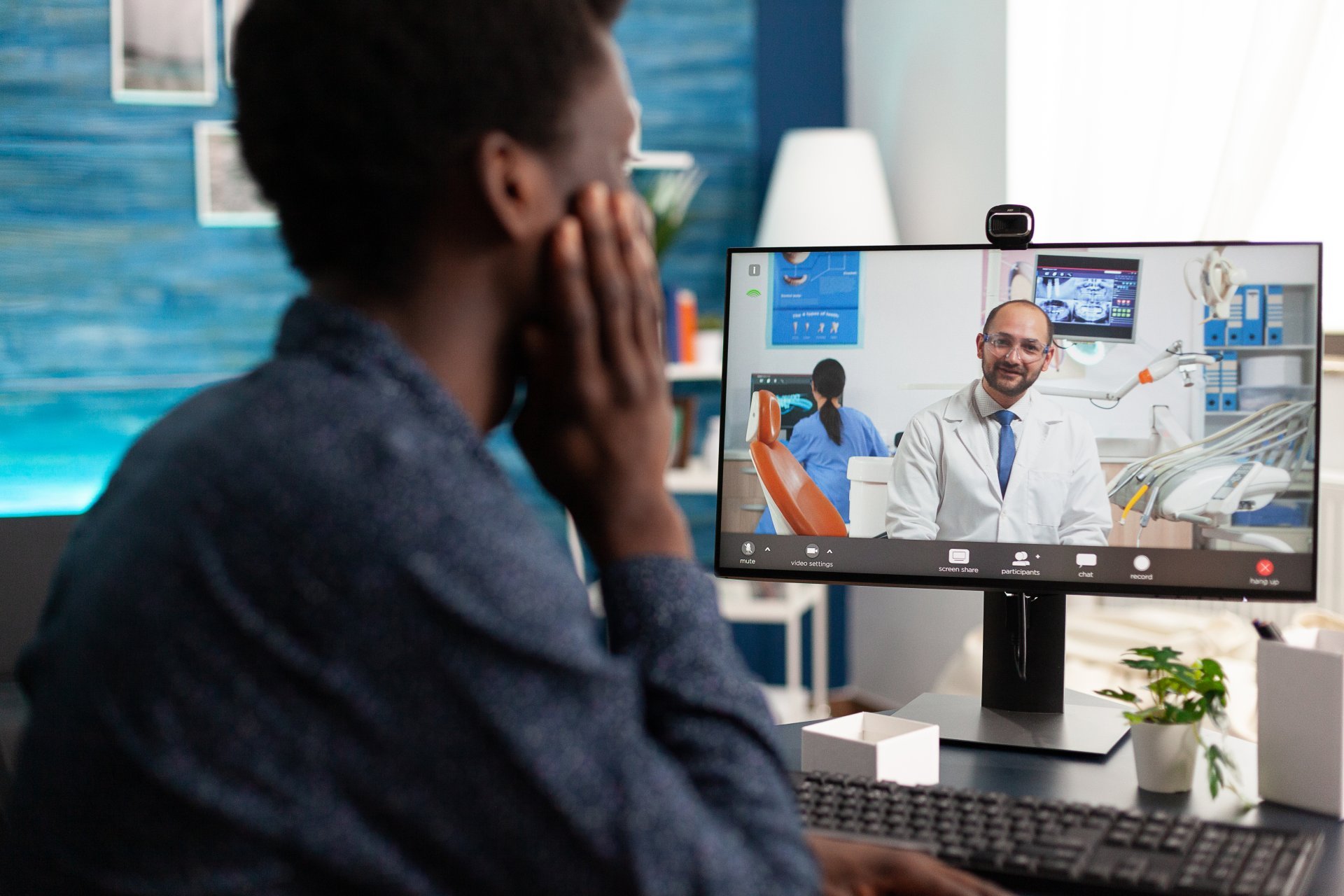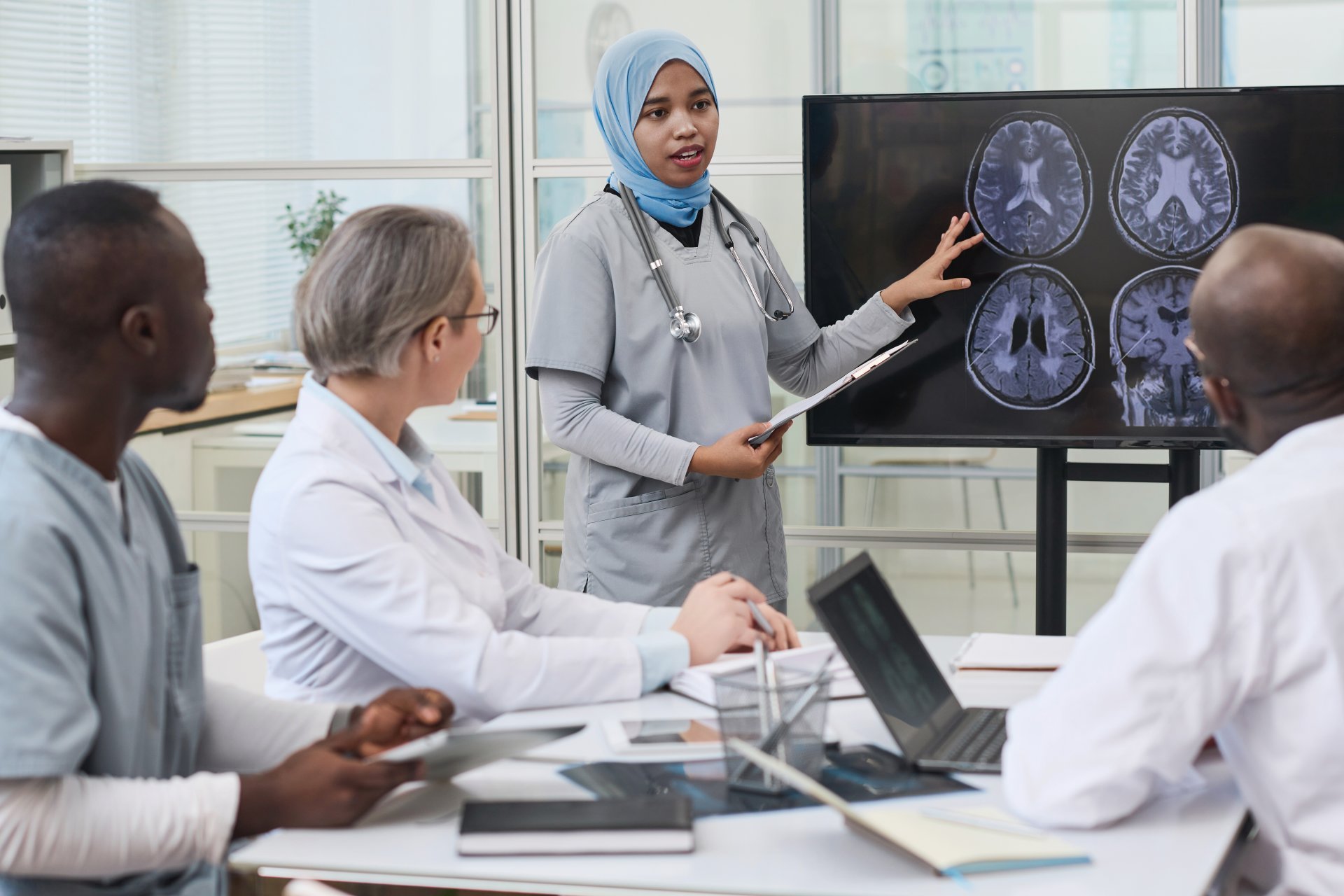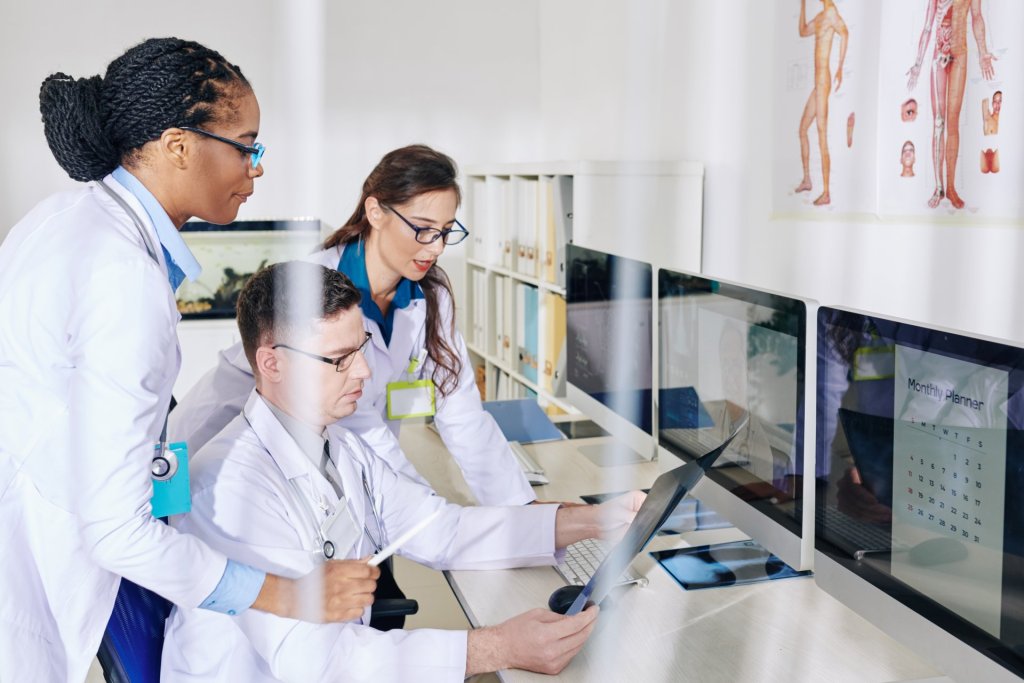As healthcare technologies have continued to evolve, their role in healthcare systems has become more integral over time. As allied health professionals represent approximately 60% of all healthcare providers, their role in administering and using the latest technology is essential. Appropriate technologies, such as telehealth, wearable sensors, and AI-powered diagnostic tools, provide solutions to improve healthcare services at an affordable cost.

Telehealth
Telehealth connects patients to healthcare services through videoconferencing, remote monitoring, electronic consults, and wireless communications. Telehealth and virtual visits became popular during the pandemic—2021 delivered record-breaking venture capital and private equity investments for digital health companies, largely driven by telehealth investment. The trend is expected to continue to be much more common in the healthcare industry in the coming years.
One study reported that 94% of patients were satisfied with virtual primary care, and 79% indicated it helped their doctor see them take charge of their health.
Wearables and in-home testing
More and more people are wearing Apple Watches and other wearable devices that track steps taken, heartbeats, blood oxygen levels, and sleep patterns. Physicians and advanced practice clinicians must incorporate the results from patients using these devices and others to monitor their health.
A review of scientific studies from 2022 found that across over 160,000 participants in all the studies included, people who were assigned to wear activity trackers took roughly 1,800 more steps each day, which translated to a weight loss of around two pounds per individual. Wearables change behavior in several ways—prompting users to set goals, allowing them to monitor things they care about, and reminding them when they’re not on track to meet their goals.
In most cases, wearable technology is designed to continuously monitor human behavior and physical activity, including biochemical and physiological aspects. The devices might be data-driven, designed to capture patient vital signs like blood pressure and heart rate to blood oxygen saturation and body temperature. Some wearable technologies may even be video or photo-capable which can help healthcare providers assess movements in physical space, their posture, and more. They can be attached to limbs on the body, objects in a room or vehicle, or even a patient’s skin.
AI-powered tools
Artificial intelligence (AI) is used in healthcare for everything from answering healthcare questions to assisting with surgeries to developing new treatments. Machine learning (ML), more access to data, cheaper hardware, and the availability of fast data transfers have contributed to the increasing application of AI in the healthcare industry. AI and ML technologies can comb through and analyze enormous amounts of health data much faster than humans. This includes everything from health records and clinical studies to genetic information.
For example, AI holds the potential to assist with rapid diagnoses of breast cancers and heart disease, assess surgical wounds, and help with drug discoveries. One study from the Cleveland Clinic reports using AI to detect risk factors for sepsis. Researchers and technologists are looking for ways to build AI health coaches that sift through health data and tell users how to stay fit.
AI tools may automate or augment more of the work of clinicians, nurses, and staff members, which in turn will free up time for more effective and compassionate face-to-face professional care delivered by humans.

Benefits and challenges of technology for patients and practitioners
Technology can benefit both patients and healthcare practitioners in many ways:
Patients
- Improved access. Patients can access their medical records and can use telehealth and telemedicine to receive more convenient care.
- Better communication. Patients can get information from doctors quickly and easily through a user-friendly interface and efficient processes.
- More accurate diagnoses. AI-driven technologies can help improve the accuracy of diagnoses, reduce the time it takes to diagnose a patient, and lead to more accurate treatments.
- More effective treatments. More advanced treatment has increased the quality of lives of patients.
- Convenience. Digital technology can make care more convenient for both patients and physicians.
Practitioners
- Improved efficiency. Technology can enhance efficiency and decrease time on administrative tasks, giving clinicians more time to work with patients and other care team members.
- More effective treatments. Technology can help practitioners provide more effective treatments.
- Better disease detection. AI can help improve disease detection and diagnosis by analyzing large amounts of data quickly and accurately.
- Better treatment plans. AI can help personalize treatment plans to a patient’s specific needs and goals.
How allied health professionals use emerging technology
Allied health professionals deliver health or related services about identifying, evaluating, and preventing diseases and disorders, dietary and nutrition services, rehabilitation, health systems management, and much more.
Allied health includes the roles of respiratory therapists, diagnostic medical sonographers, dietitians, medical technologists, occupational therapists, physical therapists, radiographers, and speech-language pathologists.
Healthcare technology will continue to play a large role in these professions as it evolves. Each allied profession will be affected by AI, wearable and implantable devices, telehealth, and virtual care. From improved operational efficiency to increased standards in patient care, technology has transformed healthcare to enhance the entire experience for patients and professionals alike.
Integrating technology into healthcare practices has transformed how allied healthcare professionals learn, deliver services, and interact with patients. From diagnostic imaging to nursing advancements to telehealth applications, staying abreast of technological developments is crucial for success in the allied health field.
Telehealth is improving allied healthcare jobs, including some top-paying roles in the field such as medical assistants. Medical billers and coders are also allied health workers who have benefited from technology. The introduction of EHRs has only made life easier for medical billers and coders since entering data into a computerized system is less time-consuming than paper-based methods and reduces the risk of errors in patient data and financial details. Accessing patient records digitally has allowed medical coding experts to work from home, increasing efficiency and productivity.
Launch your career in allied health with Prolink
The demand for allied healthcare jobs puts any eager job seeker with the right training and technical aptitude in a position of power. With the right training and education, it’s never been easier to start a new career path in allied health.
If you are ready to find your first or next allied health role, Prolink can help you select top allied healthcare jobs. Learn more about local or travel allied health careers and positions, or search Prolink’s pool of open allied healthcare jobs now to get started.








